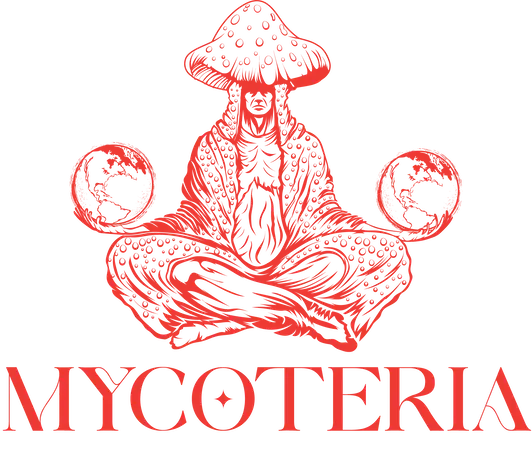Lion’s Mane typically grows on decaying wood, such as tree trunks, stumps, and fallen branches, where it plays an essential role in decomposing wood and recycling nutrients back into the soil. It is often found on hardwood trees like oak, beech, walnut, maple, and sycamore. This mushroom grows in a clumped formation, making it easy to identify in its natural environment across North America, Canada, Europe, and Asia, especially in late summer and fall.
Lion’s Mane (Hericium erinaceus), a cream-colored mushroom with pom-pom-like tendrils resembling a lion’s mane, is a popular functional mushroom known for its potential anti-inflammatory and cognitive-supporting properties. Its history as a medicinal mushroom dates back to 450 BCE, and it remains one of the most widely used nootropics today.
Lion’s Mane mushroom origin
Native to hardwood forests in Asia, North America, and Europe, Lion’s Mane has a long history of use in traditional medicine, with the earliest records traced to the Tang Dynasty in China (618-907 AD). During this time, it was believed to promote longevity and support brain function. Traditional medicine in Korea and Japan also incorporated Lion’s Mane for its potential health benefits. This mushroom is commonly found in the late summer and fall months across forests in Europe, North America, and Asia.
Where does Lion’s Mane grow in the US?
Lion’s Mane mushrooms are found in several southern states, including California, Nevada, Arkansas, Georgia, South Carolina, and Tennessee. However, it’s difficult to determine if specific conditions favor growth in one state over another, as Lion’s Mane grows across a variety of hardwood forests throughout the U.S.
What trees do Lion’s Mane grow on?
Lion’s Mane mushroom naturally grows on a variety of hardwood trees. It is often found on decaying or Lion’s Mane mushrooms naturally grow on a variety of hardwood trees, usually on decaying or dead trunks, stumps, or fallen branches. The most common trees that support Lion’s Mane growth include:
- Oak
- Beech
- Maple
- Elm
- Walnut
- Birch
These hardwood trees provide an ideal substrate for Lion’s Mane, allowing the mushroom to thrive and aiding in forest nutrient recycling by decomposing wood.
How to grow Lion’s Mane?
Lion’s Mane can also be cultivated indoors using controlled conditions on wood-based substrates. The cultivation process is similar to that for other fungi and involves selecting a suitable substrate, inoculating it with Lion’s Mane spores, incubating, and providing the necessary light and humidity to promote fruiting. This method allows for year-round cultivation of Lion’s Mane for culinary and medicinal use, with harvest-ready mushrooms typically growing within several weeks.
How to preserve Lion’s Mane mushroom?
The two main methods for preserving Lion’s Mane mushrooms are refrigeration and drying:
- Refrigeration: Fresh Lion’s Mane mushrooms can be stored in the refrigerator for about a week. Store them in a paper bag to allow airflow, and keep them away from moisture.
- Drying: For long-term storage, consider drying Lion’s Mane. Slice the mushrooms, place them on a tray, and dehydrate for 6-8 hours. Once fully dried, store them in an airtight container for future use.
Lion’s Mane mushroom potential benefits
Lion’s Mane mushrooms have been studied for various health benefits, particularly in physical, cognitive, and mental health. Key benefits include:
- Disease-fighting properties: Known for their anti-inflammatory and antioxidant effects.
- Energy regulation: May help combat fatigue and support healthy energy levels.
- Blood sugar support: May assist in regulating blood sugar levels.
- Cognitive function: Compounds in Lion’s Mane are known to stimulate nerve growth factor (NGF) production, which supports cognitive function, focus, and memory.
Other potential benefits include supporting heart, liver, and kidney health, slowing biological aging, reducing anxiety and stress, and aiding gastrointestinal health.
Can you freeze Lion’s Mane mushroom?
Yes, you can freeze Lion’s Mane mushroom to extend their shelf life while preserving their flavor and nutritional value. To freeze them, clean the mushrooms, cut them into pieces, blanch them (optional), dry thoroughly, and then pack them for freezing. Frozen Lion’s Mane mushrooms can last for several months. They can be cooked directly from frozen or thawed in the refrigerator before cooking.
How to identify Lion’s Mane?
Lion’s Mane mushrooms are identifiable by their unique appearance, which features long, white, shaggy spines that hang downward, resembling a lion’s mane. They typically have a rounded or irregular shape. When fresh, the mushroom is pure white but may develop yellow or brown hues as it ages.
How to hunt for Lion’s Mane?
Lion’s Mane mushrooms have no toxic lookalikes, making them easy to distinguish. They are commonly found on dead logs or rotting trees, with a preference for hardwoods like oak, walnut, beech, birch, maple, and sycamore. You are more likely to find them in the southern U.S. states, particularly in late summer and fall.
Is Lion’s Mane mushroom easy to grow?
Lion’s Mane mushrooms are relatively easy to cultivate but can be challenging for beginners due to the slower development of their mycelium compared to other mushroom varieties. First-time growers may find it tricky to determine if the substrate is fully colonized and ready for fruiting. If you’re new to mushroom cultivation, gaining hands-on experience with other types may be beneficial before attempting Lion’s Mane.






